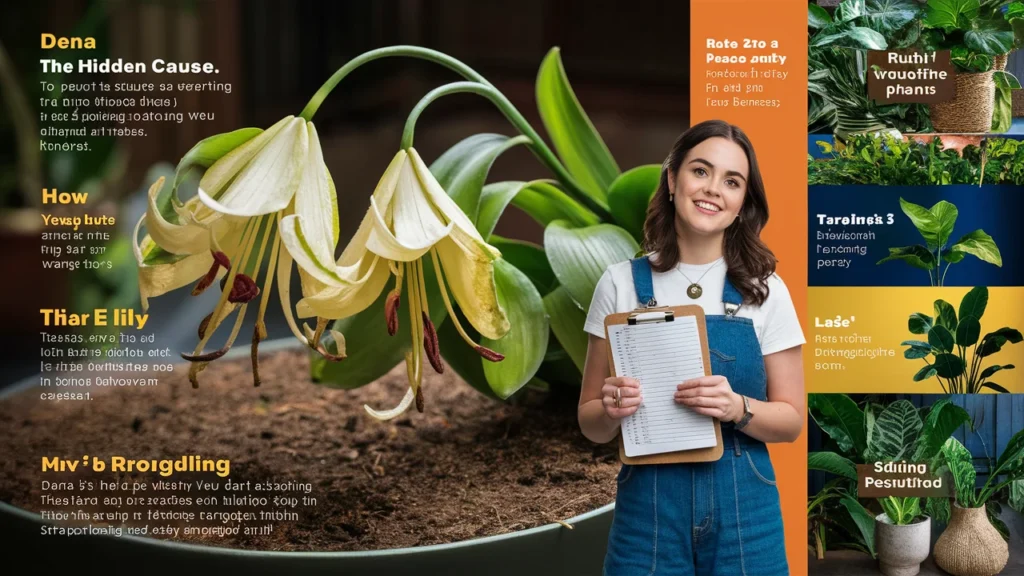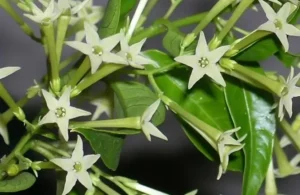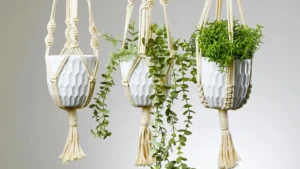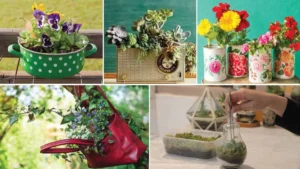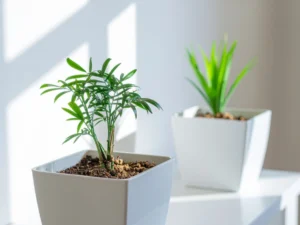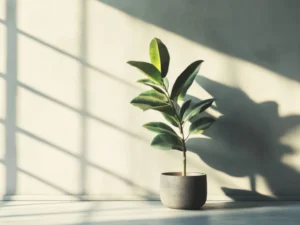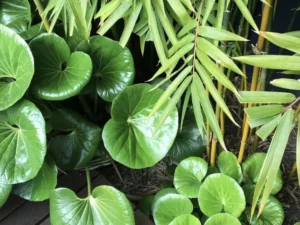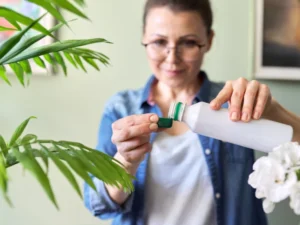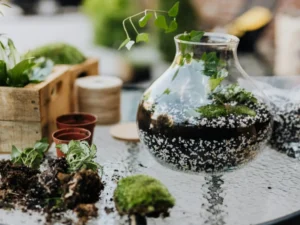A common dilemma for Peace Lily enthusiasts is dealing with a plant that’s drooping despite having moist soil. While Peace Lilies are generally hardy and forgiving, their health can sometimes be perplexing. If you’re finding that your Peace Lily is drooping but the soil remains adequately moist, you might be facing underlying issues that aren’t immediately obvious. Let’s explore some less common causes and effective solutions to restore your plant’s vitality.
Hidden Causes: Peace Lily Drooping but Soil is Moist
Root Health Issues:
Even if the soil feels moist, root problems can cause drooping. Root rot, often due to poor drainage or overwatering over time, can damage the roots. Check if the roots are mushy or discolored. Healthy roots should be firm and white. If you detect root rot, trim the affected roots and repot the plant in fresh, well-draining soil.
Temperature Stress:
Peace Lilies are sensitive to temperature fluctuations. Drooping can occur if the plant is exposed to drafts, sudden temperature changes, or placed too close to a heater or air conditioner. Ensure your plant is in a stable environment with temperatures ranging from 65-80°F (18-27°C). Moving it to a more stable location can alleviate stress.
Humidity Levels:
Peace Lilies thrive in high humidity. While moist soil is essential, the air around the plant also needs to be humid. If the surrounding air is dry, it can cause the plant to droop. Increase humidity by misting the plant regularly or using a humidity tray or humidifier. This will create a more suitable environment for your Peace Lily.
Nutrient Deficiency:
A lack of essential nutrients can affect your Peace Lily’s health, leading to drooping leaves. While the soil may be moist, it might be depleted of nutrients. Use a balanced, water-soluble fertilizer during the growing season to replenish nutrients and support healthy growth.
Light Conditions:
Peace Lilies prefer indirect light. If exposed to direct sunlight or too little light, the plant can exhibit drooping leaves. Ensure the plant receives bright, indirect light. If natural light is insufficient, consider using a grow light to provide the necessary illumination.
Pest Infestations:
Pests such as spider mites or aphids can also cause drooping. These pests often target the undersides of leaves and can be challenging to detect initially. Regularly inspect your plant for signs of pests and treat infestations with insecticidal soap or neem oil if necessary.
Effective Solutions for Peace Lily Drooping with Moist Soil
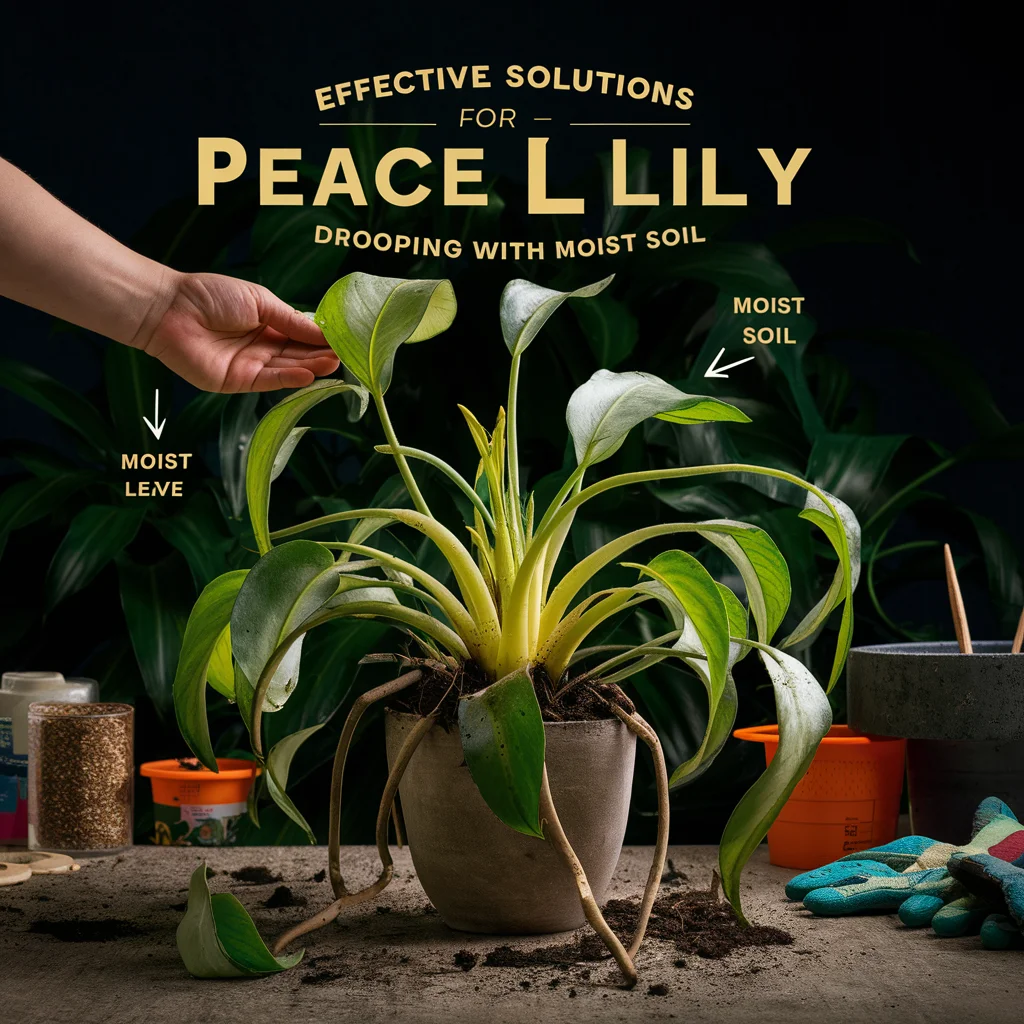
Check and Improve Drainage:
Ensure that your pot has adequate drainage holes and that excess water can escape. Consider repotting your Peace Lily into a pot with better drainage if necessary. Using a well-draining potting mix can also help prevent waterlogging.
Adjust Temperature and Location:
Move your Peace Lily to a location with a stable temperature, away from drafts and direct sources of heat or cold. This will help reduce stress and improve the plant’s overall health.
Increase Humidity:
Create a more humid environment by misting the leaves, placing the plant on a humidity tray, or using a room humidifier. This will help mimic the tropical conditions that Peace Lilies thrive in.
Fertilize Appropriately:
Regularly fertilize your Peace Lily during the growing season to ensure it receives adequate nutrients. Follow the recommended dosage on the fertilizer packaging to avoid over-fertilization, which can also cause stress.
Monitor Light Exposure:
Adjust the plant’s location to ensure it receives the right amount of light. If natural light is insufficient, consider supplemental lighting to provide the necessary brightness without direct exposure.
Inspect for Pests:
Regularly check your Peace Lily for signs of pests. If you notice any, take immediate action to treat the infestation and prevent further damage.
Conclusion
Experiencing drooping in your Peace Lily despite moist soil can be frustrating, but understanding the potential hidden causes can help you address the issue effectively. By examining factors such as root health, temperature stability, humidity, nutrient levels, light exposure, and pest issues, you can take the appropriate steps to restore your Peace Lily’s vitality. With the right care and attention, your Peace Lily can thrive and continue to be a beautiful addition to your indoor garden.
Frequently Asked Questions
Why is my Peace Lily drooping even though the soil is moist?
- A drooping Peace Lily with moist soil can be due to underlying issues such as root rot, temperature stress, low humidity, or nutrient deficiencies. Each of these factors can affect the plant’s health and lead to drooping.
How can I tell if my Peace Lily has root rot?
- Check the roots for any mushiness or discoloration. Healthy roots should be firm and white. If the roots are brown and mushy, your plant may have root rot, requiring you to trim damaged roots and repot in fresh, well-draining soil.
What temperature is ideal for a Peace Lily?
- Peace Lilies thrive in stable temperatures between 65-80°F (18-27°C). Avoid placing them near drafts, heaters, or air conditioners to prevent temperature stress, which can cause drooping.
How do I increase humidity for my Peace Lily?
How do I increase humidity for my Peace Lily?
What are signs of pest infestations on a Peace Lily?
- Common pests like spider mites or aphids often hide on the undersides of leaves. Drooping, tiny webbing, or discolored spots on leaves may indicate pests. Treat infestations with insecticidal soap or neem oil to prevent further damage.

